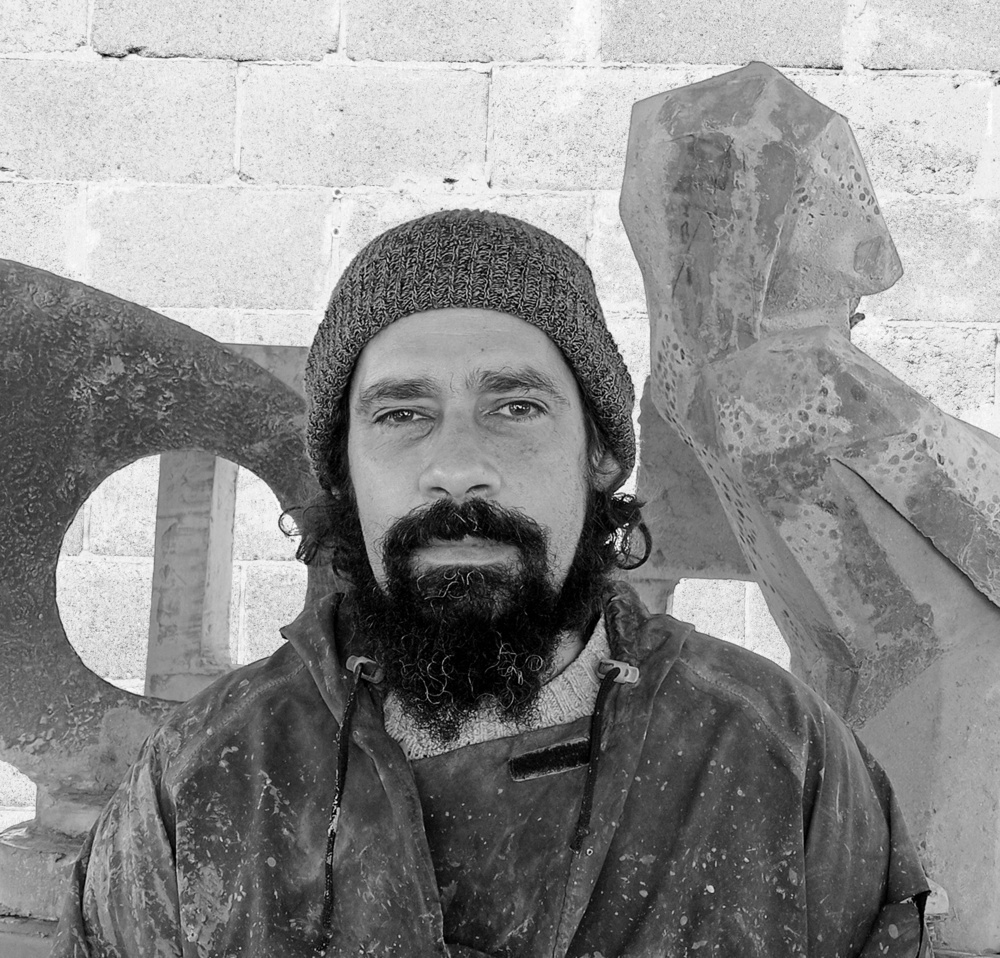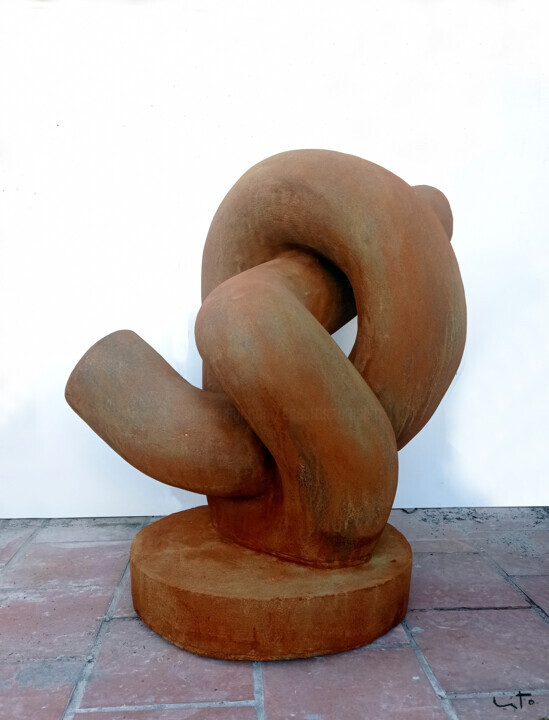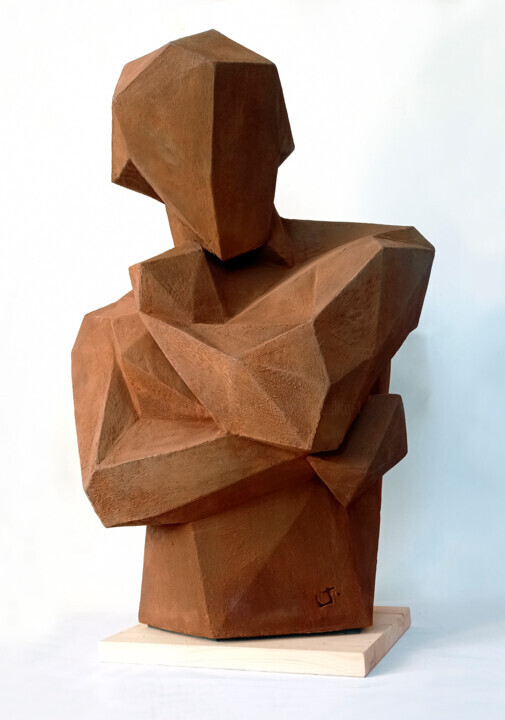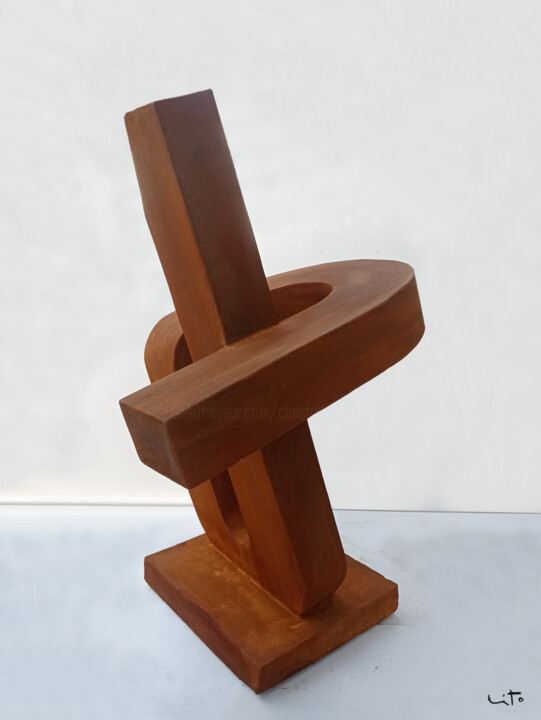What inspired you to create art and become an artist (events, feelings, experiences...)?
For as long as I can remember I have always been attracted to artistic expression. I remember contemplating classical sculptures in art books, or the engravings in the book Vieja y Pintoresca Europa, by Rolf Muller with awe and fascination. In my house there was a monographic book about Xoan Piñeiro, a sculptor from my land, with a lot of work built near where I lived and that I could visit. I remember the surprise of contemplating with the eyes of a child the sculpture of the Plaza de España in Vigo, by Juan Oliveira, an 18 meter high piece of five horses ascending in a spiral towards the sky. On the other hand, I used to draw a lot and I wanted to be a scrap metal dealer, I was fascinated to see how objects were made, I found them beautiful. That is why I have always admired the trades that work directly with tectonic materials: carpenters, masons, stonemasons,... Very important for the development of this sensitivity was the figure of my father, who transmitted to me the love for manual work, the value of the builder man. Later I became interested in architecture, and my intuitions became certainties: Jean Prouvé and Jorge Oteiza, above all, were figures who supported me in that constructive restlessness, in that need not only to design, but to build. And then came sculpture, by chance, as a trial step into a new terrain. And here we are.
What is your artistic training, the techniques and themes with which you have experimented so far?
In my case, artistic training and technique have followed different paths. I am an architect by training, and that has undoubtedly conditioned my way of understanding space and its relationships. On the technical side, I have worked as a bricklayer, and that has given me practical knowledge about the use and nature of the materials I use.
What are the 3 aspects that differentiate you from other artists, making your work unique?
I think there are no differences, and at the same time there are all of them: we all sit in the same chair, but in different ways.
Where does your inspiration come from?
From observation. We live surrounded by sculpture, understood as a combination of space and volume, both in the natural and built environment. Sometimes it is a conscious process about something concrete: a sculptural work, an image, the way rocks are piled up on a coastline, etc; other times it is a conscious process about something more abstract: exercises in descriptive geometry, or cartographic representation techniques, etc; but most of the time I think it is an unconscious process that is nourished by what has already been observed.
What is your artistic approach? What visions, sensations or feelings do you want to evoke in the viewer?
I don't try to convey any sensations at all, at least consciously. I never think about the viewer when I'm working on a work. I believe that it is not the work that interpellates the spectator, but rather it is the spectator who feels interpellated by the work and projects his or her unique and subjective gaze on it. That is why there is no room for consensus in the gaze of the other.
What is the process of creation of your works: spontaneous or with a long preparatory process (technical, inspiration from the classics of art or others)?
They are processes that require a previous preparation, from the compositional aspect to the constructive technical aspect. There is an order, a methodology that is inherent to the materials I use and that prevents spontaneity.
Do you use any particular working technique, and if so, can you explain it?
Considering the technique, as well as the materials I use, I think that, although I make sculptures, I am not a sculptor, understanding sculptor as one who "scalpere": I do not carve, I do not model; what I do is "struere": to put together, to pile up, so I define myself more as a builder. It is true that in the final stages of creation I do use classical sculptural techniques, there is a work of adjustment, a finer line that requires it, but the generating element of my works is eminently constructive.
Are there any innovative aspects in your work, and can you tell us which ones?
Perhaps I could mention the use of cardboard packaging as a formwork material and the use of concrete as a sculptural material, not as innovative elements, but perhaps as characteristic aspects.
Do you have any format or medium with which you feel more comfortable? if so, why?
I feel comfortable with medium and large formats, small formats are very useful for models and tests of larger pieces, but I find them more and more interesting as a way to explore for final pieces.
Where do you produce your works? At home, in a shared workshop or in your own workshop? And in this space, how do you organize your creative work?
I produce in a space outside my house, which started out as a residual space, but which is colonizing more and more space and is becoming a kind of eternal work zone. I have recently covered part of it so I can work when it rains, which is a great improvement in terms of my productivity. I am mentally structured, but spatially unstructured.
Does your work take you to travel to meet new collectors, for fairs or exhibitions? If so, what does it bring you?
I must say that I travel less than I would like to, but the exchange is always enriching.
How do you imagine the evolution of your work and your career as an artist in the future?
I have a lot of imagined works that open new paths for me that I would like to explore, so, hopefully, I imagine myself saying exactly this same thing 20 years from now.
What is the theme, style or technique of your latest artistic production?
I'm working on a piece based on the anatomy of women, in the style of Home IV, but I intersperse it with other works I have started. I tend to work on more than one work at the same time, and combine works in different stages of development simultaneously.
Can you tell us about your most important exhibition experience?
My last exhibition experience was at the XXIII International Biennial Arte no Morrazo, last year, and it was very gratifying. Since it was in the place where I live, and surrounded by family and friends.
If you could have created a famous work in the history of art, which one would you choose? And why?
I wouldn't think of such a thing, but I would choose the Pantheon in Rome. Because that's where it all is.
If you could invite a famous artist (dead or alive) to dinner, who would it be? How would you suggest to spend the evening?
Well, it would be with Jorge Oteiza in the never-built Chapel on the road to Santiago, in the lands of Castile. We would eat meat and drink wine, the rest would come by itself.







 Olimpia Gaia Martinelli
Olimpia Gaia Martinelli












